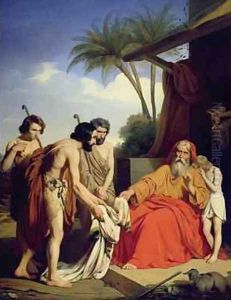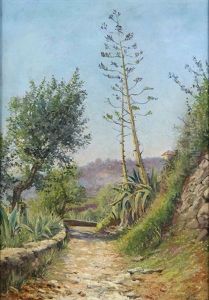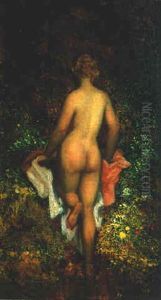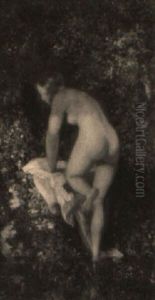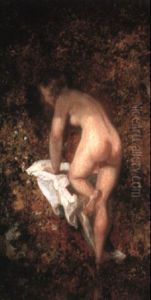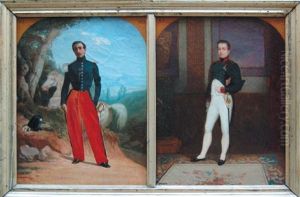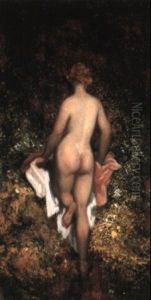Jules Ambroise Francois Naudin Paintings
Jules Ambroise François Naudin was a French artist known primarily for his work as a botanical illustrator and horticulturist rather than a traditional fine artist. Born on August 14, 1815, in Autun, France, Naudin's interest in botany and the natural world was evident from an early age.
Naudin initially pursued a medical education but was drawn to the study of plants. His passion for botany led to a prolific career as a plant explorer, botanist, and horticulturist. In the 19th century, as European nations were exploring and cataloging the natural world, Naudin's work became particularly significant. He specialized in the classification and hybridization of plants, which had a lasting impact on horticulture and agricultural science.
Throughout his career, Naudin created detailed botanical illustrations that were highly valued for both their scientific accuracy and their aesthetic quality. His illustrations contributed to numerous scientific publications and helped spread knowledge about plant species around the world. Naudin's work was not only important for the field of botany but also for the art of botanical illustration, which requires a keen eye for detail and a deep understanding of plant morphology.
Naudin was also engaged in academic and research work. He was involved with various botanical gardens and institutions, including the Jardin des Plantes in Paris, where he was able to conduct experiments on plant hybridization. His studies in hybridization and plant genetics were ahead of their time, predating the rediscovery of Mendel's work on heredity. Naudin's own theory of 'constant hybrids' contributed to the understanding of plant reproduction and genetics.
He died on March 19, 1899, in Saint-Georges-d'Orques. While Naudin may not be widely known as a traditional artist, his legacy in the scientific community and his contributions to botanical artistry have ensured him a place in the history of science and art. His illustrations remain a valuable resource for botanists, horticulturists, and historians of science.
